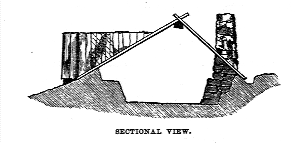
320 HISTORY OF BROOKLYN.
at Brooklyn Ferry, A BULL-BAITING after the true English manner. Taurus will be brought to the ring at half-past three o’clock; some good dogs are already provided, but every assistance of that sort will be esteemed a favor. A dinner exactly British will be upon Loosely's table at eleven o'clock, after which there is no doubt but that the song of ‘Oh! the Roast Beef of Old England!’ will be sung with harmony and glee.
“This notice gives to all who covet
Baiting the bull and dearly love it,
To-morrow’s very afternoon,
At three—or rather not so soon—
A bull of magnitude and spirit
Will dare the dog’s presuming merit.
Taurus is steel to the back-bone,
And canine cunning does disown;
True British blood runs thro' his veins,
And barking numbers he disdains.
Sooner than knavish dogs shall rule,
He'll prove himself a true JOHN BULL.1”
At this time (July 8) Brooklyn Fort, although yet imperfect, having but eighteen cannon mounted, had two bomb-proof magazines and a garrison of two hundred Brunswickers. “Cobble Hill,” also in process of repair, was occupied by two companies.2 The Fiftyfourth Regiment were encamped at “Ferry Hill, two miles from Brooklyn, and at Bedford were two hundred grenadiers.

The stationary camp at Bedford was located on broken ground, then on the farm of Barent Lefferts, now crossed by Franklin and Classon avenues, Bergen, Wyckoff, Warren, Baltic, and Butler streets. The huts or barracks were built by throwing out the earth from a trench thirty to fifty feet and about twelve or fifteen feet wide, with a board roof resting on the bank formed by the excavated earth. A large stone fireplace or two were arranged in
1 Rivington, June 20, 1781.
2 “Cobble Hill commanded Brooklyn Fort, but was made lower, for fear it might fall into the hands of the Continentals.”—Onderdank, p. 191.